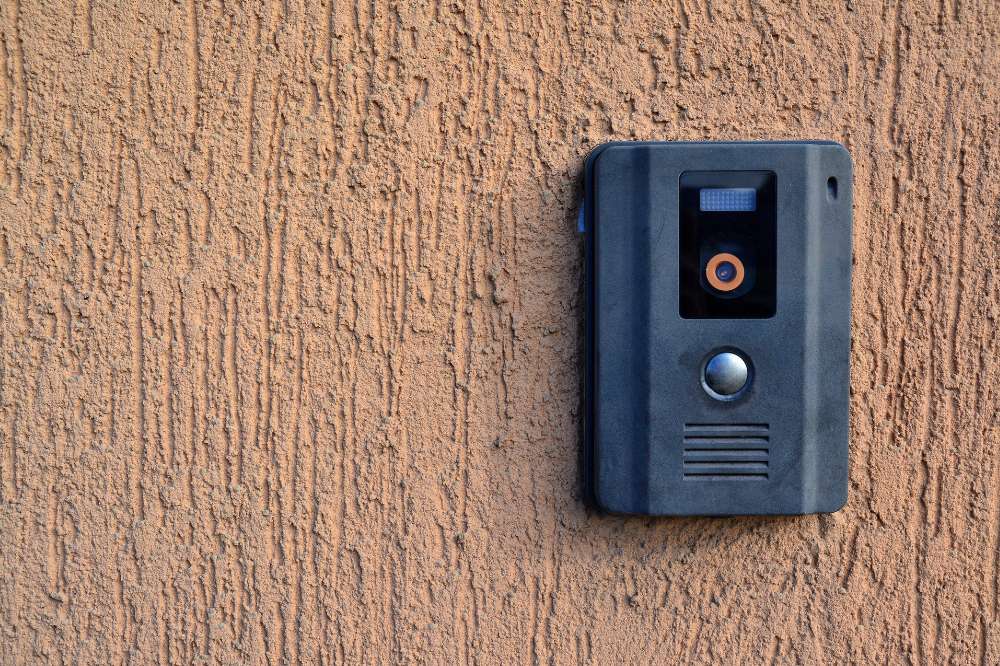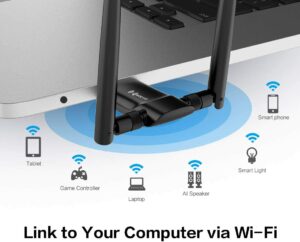With home security at the forefront, Ring cameras have become popular. These smart devices offer features like live video streaming, motion detection, and cloud storage so homeowners can monitor things from anywhere. However, one common question arises: do ring cameras work without WiFi? It’s a question about reliability and accessibility.
In this blog post, we will examine whether ring cameras work without WiFi and explore alternatives without WiFi. Let’s get started.
Importance of WiFi for Ring Cameras

WiFi connectivity unlocks the full potential of Ring cameras as home security solutions. For enhanced surveillance and monitoring, these devices require a stable internet connection. Here are some reasons why Ring cameras need WiFi connections.
No products found.
Live Streaming
Real-time video streaming is one of the primary functions of Ring cameras. Ring app users can access live feeds from their cameras via WiFi from their smartphones or other devices. With this feature, homeowners can monitor their property while at work, on vacation, or just relaxing at home.
Motion Detection and Alerts
Ring cameras use WiFi to detect motion in their vicinity and send instant alerts to users’ phones. The proactive approach to security allows homeowners to respond to potential threats even if they’re not home.
Cloud Storage and Video Recording
Ring cameras can communicate seamlessly with the cloud using WiFi, making it easier to store recordings. It provides valuable evidence in security incidents or emergencies by securely archiving videos.
Remote Access and Control
You can remotely access and control Ring cameras using WiFi connectivity using the Ring app. The app allows users to adjust camera settings, view footage, and get notifications from anywhere with an internet connection.
Basically, WiFi powers Ring cameras, enabling features like live streaming, motion detection, cloud storage, and remote access. Without WiFi connectivity, Ring cameras are severely limited in their capabilities.
Do Ring Cameras Work Without WiFi?
Ring cameras work seamlessly over WiFi networks, leveraging internet connectivity for essential features like live streaming, motion detection, and cloud storage. But do ring cameras work without WiFi?
The short answer is no. As home security cameras, Ring cameras rely heavily on WiFi connectivity to communicate with the Ring app and cloud servers. Without WiFi, Ring cameras can’t stream live video, detect motion, send alerts, or store recorded footage.
Without WiFi, Ring cameras are significantly less helpful and unable to provide comprehensive surveillance and monitoring. Essentially, WiFi enables Ring cameras to protect homes and properties as intended.
While Ring cameras may not work without WiFi in their traditional capacity, there are alternative solutions for limited internet connectivity. The alternative usually involves cellular data or mobile hotspots for connectivity but with potential limitations.
Limitations of Operating Ring Cameras Without WiFi
You’ll find they’re severely limited if you try to use Ring cameras without WiFi. These are some of the drawbacks:
- Loss of Live Streaming: WiFi enables Ring cameras to stream live video to the Ring app on users’ devices. The users cannot access live feeds of their property if WiFi is unavailable.
- Inability to Receive Alerts: Ring cameras use WiFi to send instant alerts to smartphones or other devices when motion is detected. The users won’t receive these notifications without WiFi, so they might miss important security alerts.
- Lack of Cloud Storage: Ring cameras connect to WiFi so you can transfer recorded footage to the cloud. Users can’t upload videos to the cloud without WiFi, limiting their ability to review past events or provide evidence.
- Limited Remote Access: You can control your Ring cameras via the Ring app from anywhere with an internet connection. Without WiFi, users can’t manage camera settings or watch footage remotely, so they can’t manage their cameras remotely.
- Reduced Security Coverage: Ring cameras’ lack of WiFi severely limits their overall security coverage. Cameras without live streaming, motion detection, and cloud storage cannot fulfill their intended roles in protecting homes and properties.
Alternative Solutions for Ring Cameras Without WiFi
Ring cameras are primarily designed to work with WiFi networks, but there are alternative solutions if WiFi isn’t available. Here are some options to consider:
Mobile Hotspots
If Ring cameras don’t have WiFi, you could connect them to the internet using a mobile hotspot. Mobile hotspots create WiFi connections using cellular data, so Ring cameras can operate even in remote areas or places with limited WiFi coverage. However, this approach may incur additional data usage costs and isn’t recommended for extended periods.
Hybrid Solutions
Multiple connectivity options can provide redundancy and ensure the uninterrupted operation of Ring cameras. For example, a Ring camera with WiFi and cellular connectivity through a mobile hotspot can switch between the two based on availability, providing added reliability. Hybrid solutions ensure continuous monitoring and surveillance despite internet outages.
If WiFi is not readily available, users can explore alternative solutions to maintain Ring cameras’ functionality and effectiveness.
Reliable WiFi Connection Tips for Ring Cameras
Ring cameras and other smart home devices work best with a stable WiFi connection. You can keep your WiFi connection reliable by following these tips:
Optimal Router Placement
Place your WiFi router in a central location within your home to ensure even coverage. Place the router away from walls, furniture, and large appliances that may interfere with the signal.
Signal Strength Enhancement
If you want to extend the reach of your WiFi network, consider using WiFi signal boosters, range extenders, or mesh WiFi systems. These devices help eliminate dead zones and improve signal strength in areas with poor coverage.
Firmware Updates
Regularly update your router’s firmware to ensure it has the latest security patches and performance enhancements. Visit the router manufacturer’s website for updates or access the router’s admin interface.
Frequency Optimization
Select the best WiFi frequency band (2.4 GHz or 5 GHz) for your Ring cameras based on your home’s layout and interference levels. Although the 2.4 GHz band has a better range, the 5 GHz band has faster speeds but a shorter range.
Network Security Measures
Protect your WiFi network with a strong password and enable encryption (WPA2 or WPA3) to prevent unauthorized access. Don’t use default passwords or open your network, as these can compromise security.
Bandwidth Management
Limit bandwidth-intensive activities like video streaming or large file downloads for essential devices like Ring cameras. Use your router’s Quality of Service (QoS) settings to allocate bandwidth effectively.
Regular Maintenance
Occasionally, reboot your router and other network devices to refresh connections and resolve temporary issues. In addition, perform regular maintenance tasks such as clearing cache, updating device drivers, and optimizing network settings.
These tips will help you get a stable and reliable WiFi connection for your Ring cameras, enhancing their performance and effectiveness.
FAQs
Does a Ring camera still record without WiFi?
In contrast to other security cameras that store footage locally, Ring devices only store footage in the cloud. Consequently, the camera cannot function effectively without a stable and reliable WiFi network. Ring cameras can’t record anything unless you have WiFi because they don’t support local storage.
Can Ring use SD card as internal storage?
Yes, some Ring camera models support using a microSD card as internal storage for recorded footage. However, not all Ring cameras offer this feature. Ring Indoor Cams, Ring Stick Up Cams, and specific models of Ring Spotlight Cams and Ring Floodlight Cams can store video clips on a microSD card. It is an extra layer of backup that ensures footage is accessible if there’s a problem with the cloud.
Does Ring work if WiFi goes out?
Ring cameras require a stable WiFi connection to function correctly. When the WiFi goes out, Ring cameras won’t be able to do certain things, like live streaming, motion detection alerts, or remote access.
Several Ring cameras have local storage options, like microSD cards, to keep recording even offline. Once the WiFi connection is back, the cameras will sync with the cloud and resume regular operation.
How far will Ring camera connect to WiFi?
A Ring camera’s WiFi range can vary Depending on signal strength, interference, and environmental obstacles. It’s best to keep your Ring camera 20-25 feet from your wireless router for the best performance.
When the camera is too far from the router, there may be weaker signal strength and connectivity issues. WiFi extenders or mesh WiFi systems can help you extend the range if you’re in a more significant or more challenging environment.
The Takeaway
While Ring cameras have incredible convenience and security features, their functionality depends on a stable WiFi connection. With WiFi, you can live stream, get motion detection alerts, and access your Ring camera from anywhere. However, users must be aware of the limitations of operating Ring cameras without WiFi and explore alternative solutions to maintain security.
Keeping WiFi connectivity reliable and understanding the implications of WiFi outages can ensure continuous surveillance and monitoring with Ring cameras. Secure your home with Ring’s innovative security solutions.



